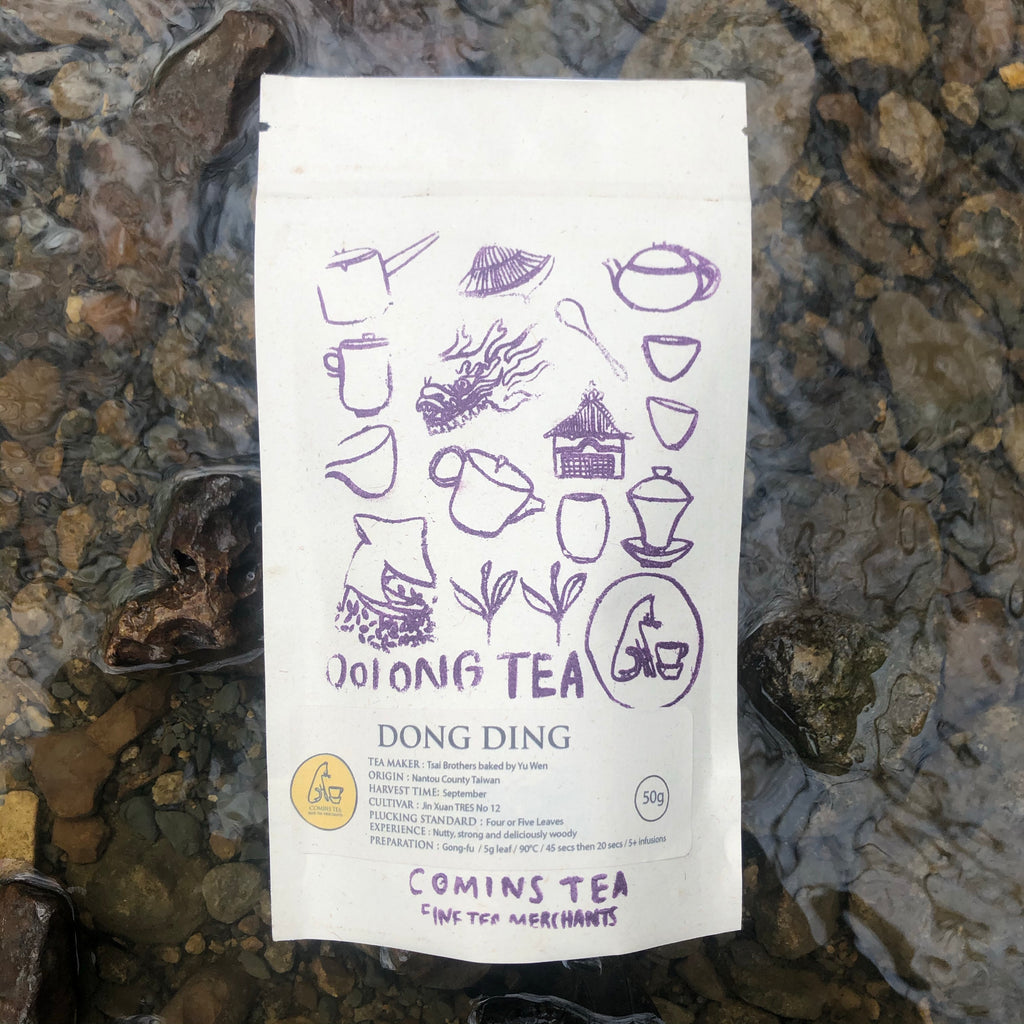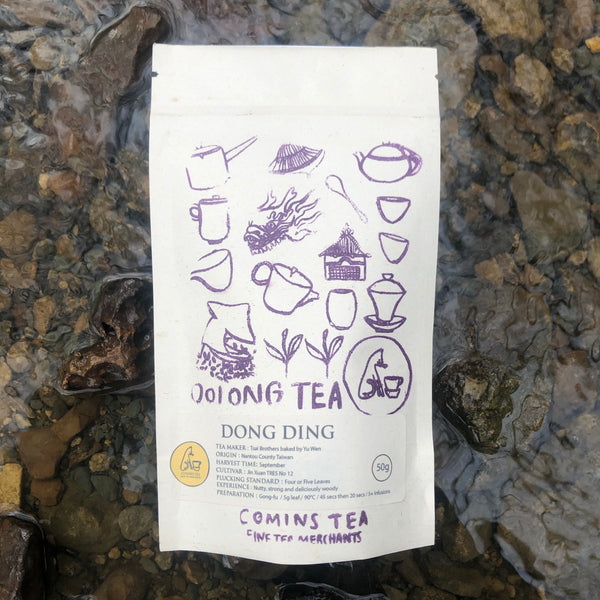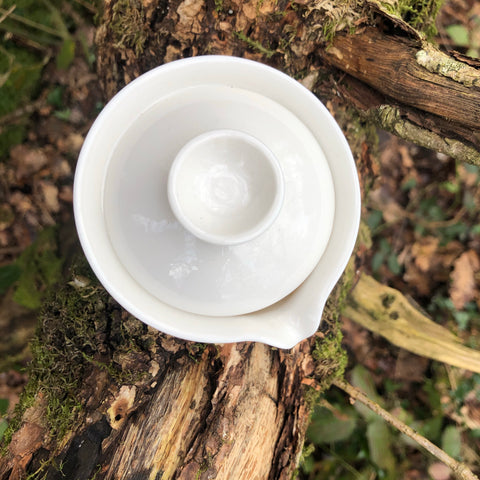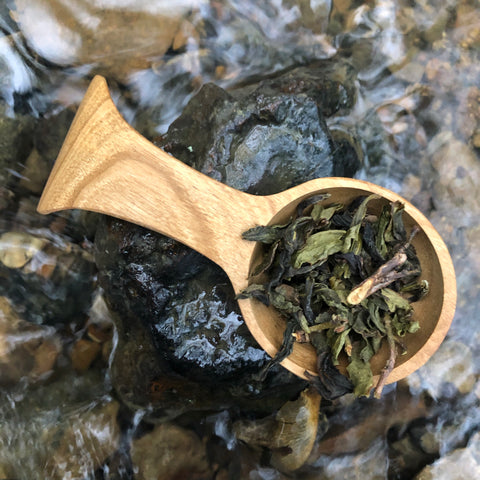Custom Baked Dong Ding : Baked Jin Xuan Oolong Tea
Simply put...
Nutty, strong and deliciously woody. This tea is produced from the Jin Xuan T-12 cultivar using a 3 step multi-stage oven baking process to a finish specified by Rob & Michelle.
In more depth
Tea maker : Processed by : Tsai Brothers Baked by : Yu Wen
Leaf Origin : Tsai Brothers tea farm Nantou County Taiwan
Size : 1 hectare total split into 3 cultivars
Harvest Time : Spring
A note on harvest time for Dong Ding Style Teas : Many Dong Ding makers store the tea to let it mellow before baking including our partners. Spring tea is baked in Autumn and Autumn tea baked in Spring
Cultivar : Jin Xuan TRES No 12 (Interested to learn more about Taiwanese tea style, cultivar & terroir? click here to read our blog on the topic)
Plucking standard : Four or Five Leaves
Processing : Medium oxidised, three-step multi-stage oven baking [modern oven]
Experience : Nutty, strong and deliciously woody
This tea is the product of the highly networked tea system in Taiwan : in this case the tea is grown and initially processed by one family before being finished by another. To learn more about our partnerships in Taiwan and who we work with to bring you these great teas please do head over to our blog > what you read here is just part of our commitment to greater transparency in tea.
Last visited by Comins : Summer 2017, Rob Comins
How to prepare tea (Gong Fu Style)...
Amount of tea per cup (200 ml): 5g (1/3 of a pot)
Temperature of water: 90℃
Infusion time: 45 seconds and then 20 seconds as desired
Number of infusions: 5+
How to enjoy: No milk, no sugar
How to [prepare (Western Style)...
Amount of tea per cup (200 ml): 5g (one tea caddy spoon)
Temperature of water: 90℃ / 195℉ (boil kettle, cool for 20 seconds)
Infusion time: 2 minutes (or as desired). Add 1 minute for each further infusion.
Number of infusions: 3 to 4
How to enjoy: No milk, no sugar
Tales of the Tea Trade (Dong Ding)...
A few interesting facts : Dong Ding, or Tung Ting, Oolong is one of Taiwan's most famous teas. This tea is from the Jinxuan T-12 cultivar. The name means “frozen peak” and refers to Tung Ting mountain, a tea producing area in Nantou, Taiwan whose name has become eponymous with its style of tea manufacturing. Tea was first planted here at the end of the Qing Dynasty (1644-1911). Initially just twelve tea plants were imported from Fujian, China.
Altitude impacts flavour : The altitude of the tea garden and the surrounding mountains mean that the teas are grown enshrouded in mist and receive minimal sunshine. At night, temperatures can drop below freezing. It is these factors that contribute to the tea's natural sweetness and richness of flavour and aroma.
Oxidation impacts flavour : Dong Ding teas have a longer oxidisation period and are also slowly baked at a high temperatures, with careful attention to how the flavours and aromas are changing throughout the baking process.
. 
The result is caramelised sweetness with a depth and complexity that literally makes your mouth water—it’s a phenomenon the Chinese call “Hui Gan.”
Rob : Extract from our our book Tales of the tea trade :
Rob "Yuwen and her family, who live in Mingjian, western Nantou County. This area has the highest concentration of tea producers in Taiwan. Despite this, one third of the crops grown are not tea; pineapple, dragon fruit, ginger, bananas and a large variety of local vegetables create a diversity made possible by the small plot system. This is not only necessary for the survival of many farmers, but is also helpful in pest control, as natural barriers are created to stop the spread of disease"
Yuwen: ‘I first started in tea when I went to my father’s tea factory in China at the age of 21 or 22. When I arrived I knew very little about tea, but he needed extra tea bakers, so I was put in charge of baking. I worked there for four years, living and working at the factory. As the boss’s daughter I could not admit that I didn’t know anything – I just had to learn from the workers, what they asked and their comments. My father encouraged me, telling me that making tea is a job that you enjoy, sitting down with your customers and serving them [....] The hardest part of producing tea is that once you are baking, there can be no break until it is finished. This is why I bake in the evening, so there can be no interruption from my two boys!














![2025 EXPLORE Oolong Tea [3 oolong tea gift box]](http://cominstea.com/cdn/shop/files/D3A564FC-1B9A-4E04-9F94-559B47A66C36_large.heic?v=1700753872)


![Spring Four Seasons [Si Ji Chun]](http://cominstea.com/cdn/shop/files/FullSizeRender_133f0bd5-7e93-4cab-b9b2-7b7c6bbdfddb_large.heic?v=1694630112)